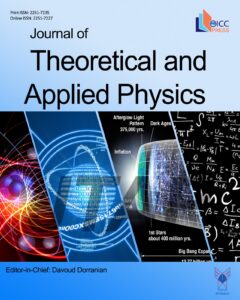Experimental and theoretical investigation of spontaneous and surface-enhanced Raman scattering (SERS) spectroscopy of pure and boron-doped carbon nanotubes
Authors
Abstract
AbstractIn this paper, due to the importance and abundant applications of carbon nanotubes doped with boron (CNT/B2O3) in various industries with changes in the electrical, mechanical and chemical properties, mode identification and intensity of the Raman spectra of pure and boron oxide molecule-doped spectra have been performed. The main task in this paper is to monitor the alteration of the relevant vibrational mode intensities of the pure and B-doped samples. In experimental approach, by utilizing a simple method we synthesized CNT doped with B2O3 using laser ablation in liquid environment technique. The silver nanoparticles were made by the Lee–Meisel method, and then the spontaneous and surface-enhanced Raman scattering (SERS) spectra of pure and B-doped carbon nanotubes were collected. In simulation approach, using the Gauss View and Gaussian software [basis set 6-31G, computational method DFT (B3LYP)], the spontaneous and SERS spectroscopy of pure and B-doped carbon nanotubes was calculated. Due to the presence of silver nanoparticles in the vicinity of carbon nanotube and boron element, SERS intensity to spontaneous Raman (NR) intensity ratio ISERS/INRdocumentclass[12pt]{minimal} usepackage{amsmath} usepackage{wasysym} usepackage{amsfonts} usepackage{amssymb} usepackage{amsbsy} usepackage{mathrsfs} usepackage{upgreek} setlength{oddsidemargin}{-69pt} egin{document}$$left( {{ aise0.7exhbox{${I_{ ext{SERS}} }$} !mathord{left/ {vphantom {{I_{ ext{SERS}} } {I_{ ext{NR}} }}} ight.kern-0pt} !lower0.7exhbox{${I_{ ext{NR}} }$}}} ight)$$end{document} increases in the D, G and boron oxide modes of up to 12-fold were observed. A good agreement is found between the computational and the experimental SERS results for the vibrational spectra of the synthesized composite materials.



